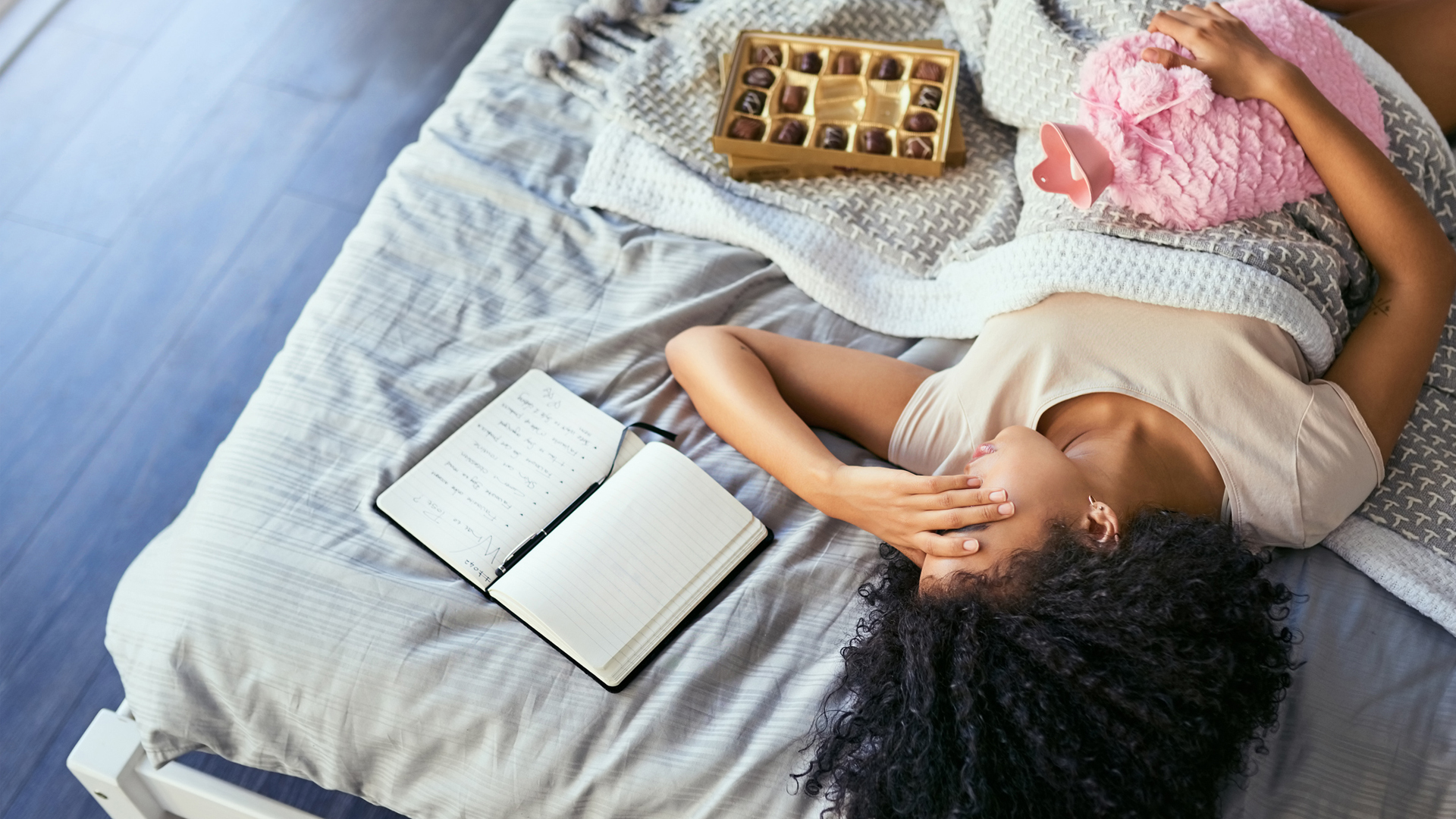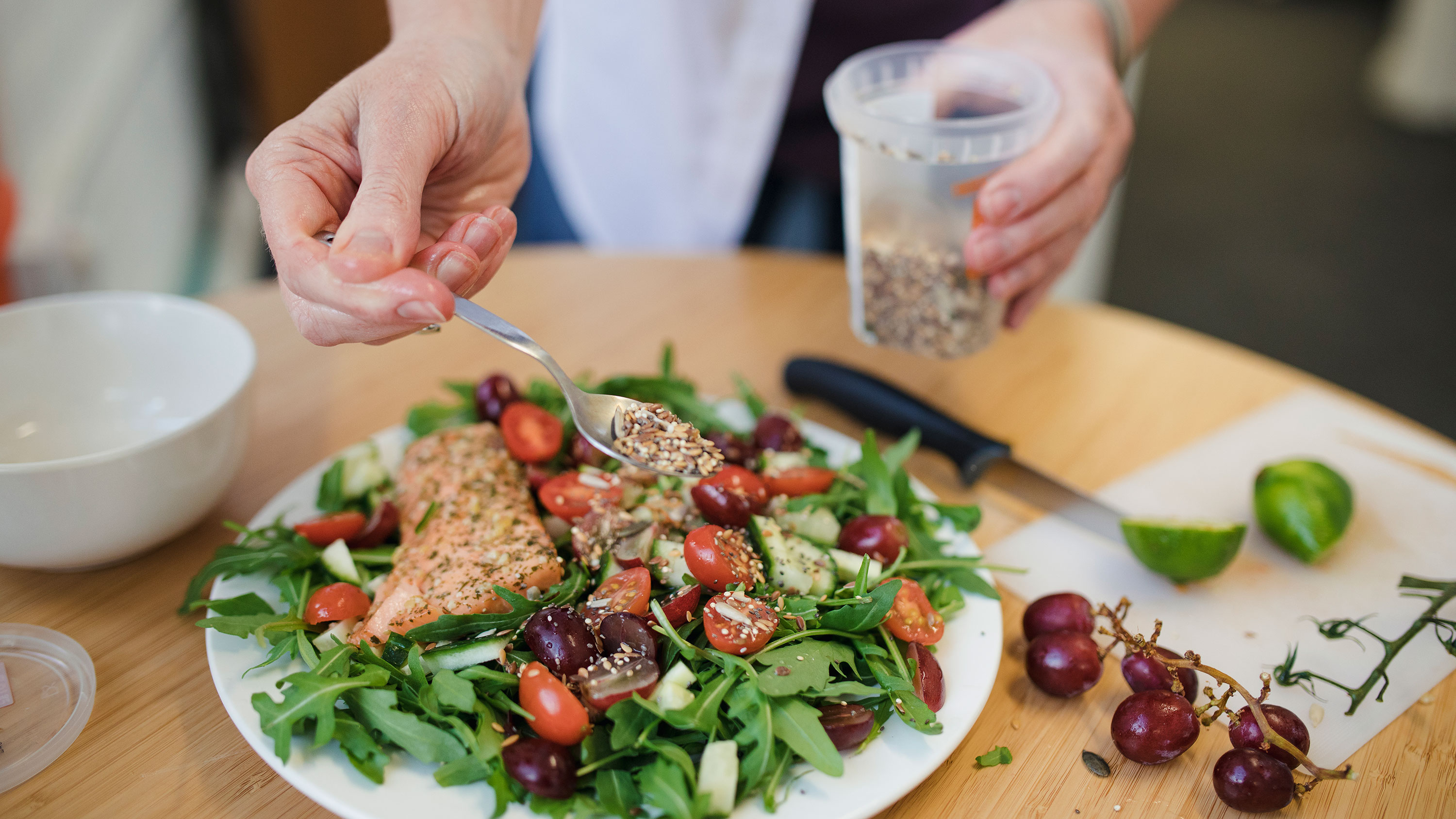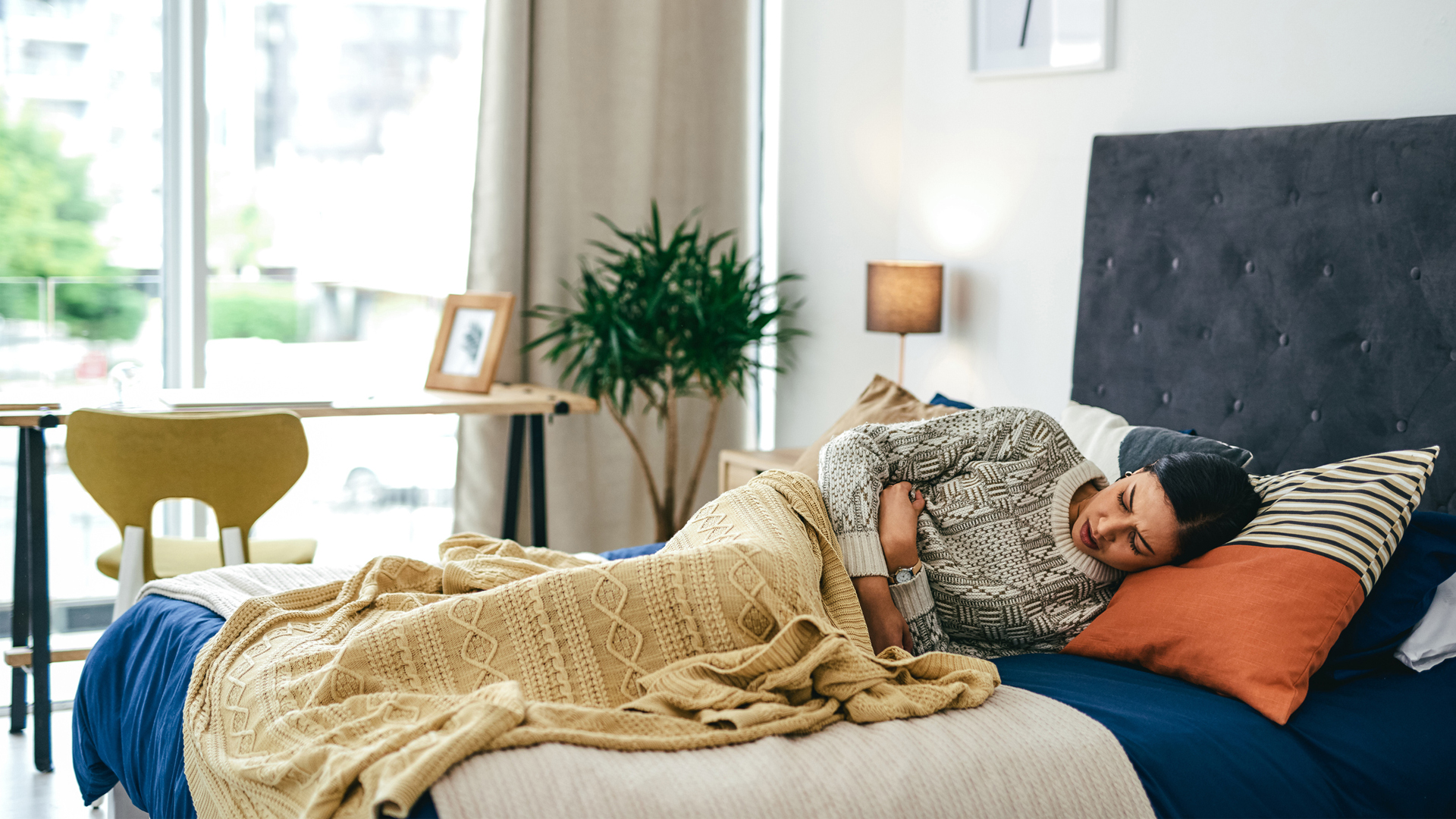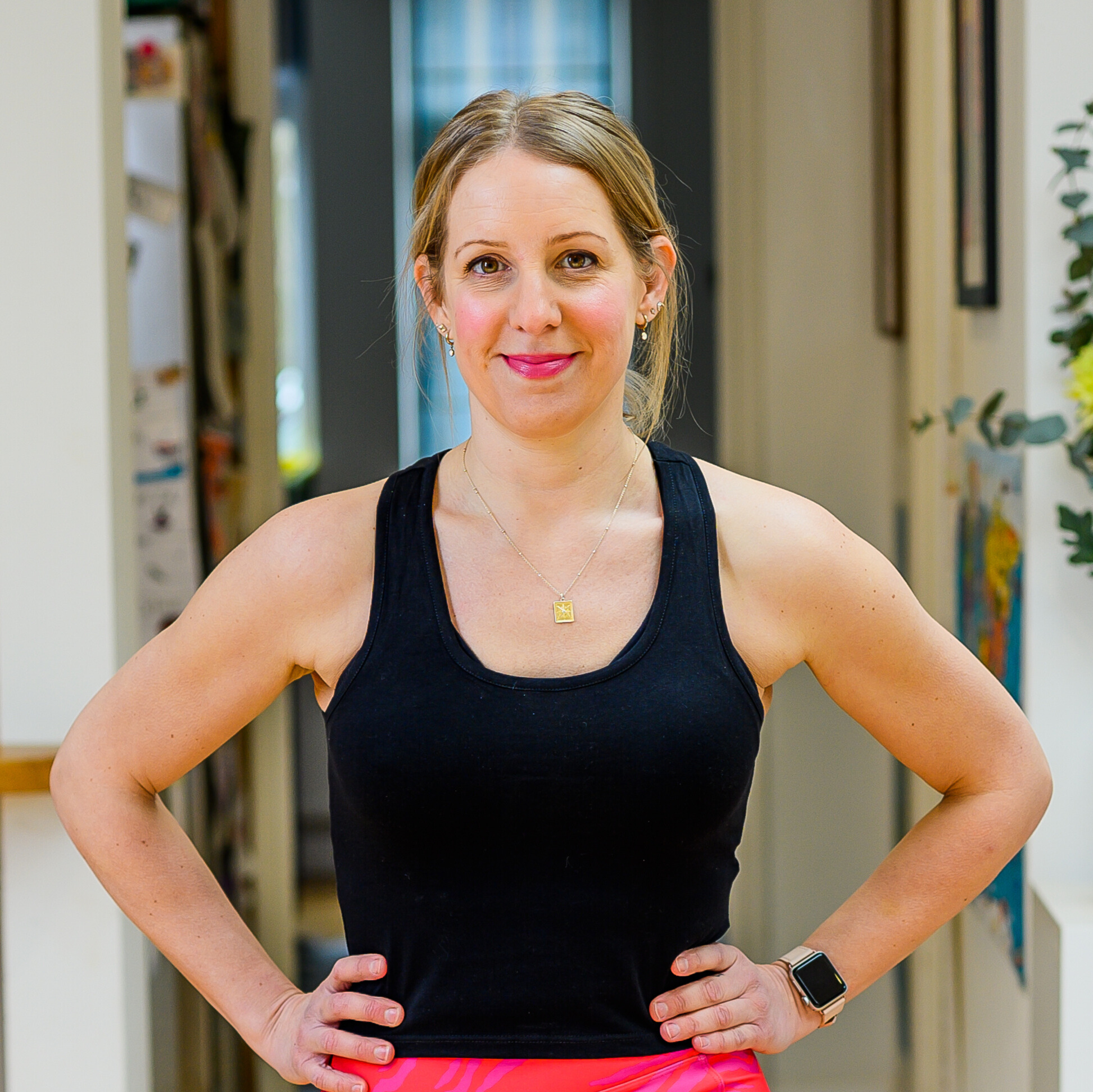What foods help with period cramps?
Wondering what foods help with period cramps? Here’s what to eat and what to avoid to feel better


You may be craving sugary treats and comfort food, but when it comes to what foods help with period cramps, this couldn’t be a worse idea. The thing is, anything processed, salty or containing food additives is worth avoiding when you’re menstruating, because these are inflammatory ingredients that can make cramps more painful.
Instead, you want to nourish your body with anti-inflammatory foods like berries, green leafy vegetables and tomatoes, as well as omega-3 foods including salmon, tuna and mackerel.
Eating enough lean protein is essential for overall health, and during your period, it could also help to keep you full and to avoid craving unhealthy foods. If you want to up your intake, then our guide to the best protein powder for women has some great options.
In this article we speak to the experts about the cause of period cramps, foods to eat and avoid, and handy lifestyle tips for easing pain.
What causes period cramps?
“Menstrual cramps happen because of contractions in the uterus, or womb, which is a muscle,” says nutritionist Kiran Singh. “If it contracts too strongly during your period, it can press against nearby blood vessels. This briefly cuts off oxygen to the uterus. It's this lack of oxygen that causes your pain and cramping.”
How can diet help with period cramps?
According to Benedetta Andreotti, nutritionist at Love Yourself Meals Ltd, there’s a growing body of evidence suggesting that anti-inflammatory and plant-based diets, including high fiber foods such as vegetables, fruit, wholegrains, legumes, nuts and seeds, help to decrease inflammation in the body and reduce period cramps.
“By contrast, a Western-style diet high in salt, sugar and saturated fat can increase inflammation and cause pain,” she says. “This is attributed to the fact that high quantities of salt, sugar and fat cause the release of a protein called C-reactive protein, which is responsible for the inflammation. Its levels rise when there is inflammation in the body.
Start your week with achievable workout ideas, health tips and wellbeing advice in your inbox.
“Other clinical trials have highlighted the benefits of specific micronutrients such as vitamin E, vitamin D, vitamin B6 and B1, magnesium, calcium, zinc and fish oils in relieving pain, due to their antioxidant and anti-inflammatory properties.”

Vitamin E, she says, reduces pain and menstrual blood flow; vitamin D regulates the cycle, relieves muscle pain and improves mood; vitamin B6 and B1 help with premenstrual pain; magnesium helps with muscle relaxation; calcium reduces fluid retention and abdominal bloating; and zinc and fish oils relieve cramps and reduce mood swings.
“There is also a connection between the food you eat and your body’s estrogen levels,” she says. “Animal products and added oils increase the levels of estrogens in the body. The more estrogen-based foods you consume, the more likely your uterine lining becomes abnormally thick. As a result, when it begins to break down during the menstrual cycle, this process creates more prostaglandins, resulting in higher levels of pain.”
What foods help with period cramps?
As we’ve heard, your diet can either help or hinder period pain so you might want to stock up on, and avoid, certain foods.
First up, ditch ‘white’ foods including sugar, bread and pasta and steer clear of trans fats that are often found in processed foods like French fries, cookies and crackers. Alcohol, tobacco and caffeine can also impact period cramps – all these things increase inflammation in the body and might make menstrual pain worse.
So, what foods can help with period cramps?
Leafy green vegetables
Singh says: “Foods rich in magnesium – found in dark leafy green vegetables – should be a part of your routine. This is because this mineral helps with muscle relaxation. Foods like spinach, kale, collard greens and Swiss chard are the best when you are menstruating because they are filled with iron, which gets depleted during your period.”
Nuts
“Nuts contain lower levels of manganese that’s shown to help with increased period pains as well as other symptoms like mood swings or concentration issues,” says Singh. “You can opt for hazelnuts, pecans, macadamia, and walnuts to get access to this mineral. You can even go for pumpkin, chia, sesame, or sunflower seeds and have comfortable periods.”
Herbs
“Usually, the root cause of menstrual issues lies with the changing hormonal levels,” says Singh. “And a lot of herbs like chasteberry and wild yam have potent efficacy in returning the hormonal levels back to their standard range. So, opting for supplements containing these herbs will help you with at-home menstrual relief without any hassles. They will help you to balance the estrogens and progesterone levels and alleviate symptoms associated with periods significantly.”
Salmon
“Salmon is rich in Omega-3 fatty acids, which play an important role in relaxing your muscles and steadying your nerves. This will help to deal with cramps and crankiness. If you don’t like fish, reach for walnuts or avocados, which are also full of Omega-3s.”
Dark chocolate
“This tasty treat has antioxidants and is a source of magnesium, which reduces mood swings and helps to regulate serotonin – the happy hormone! Munching down on a few squares a week should also help to satisfy your cravings,” says Singh.
Whole grains
According to Singh, these are an excellent source of magnesium, which reduces muscle tension. In addition to this, they have B & E vitamins, which help to combat fatigue and depression.
“My favorite thing about whole grains is that they keep you feeling fuller for longer, so if you eat them every few hours you won’t end up hungry and cranky at the end of the night,” says Singh.
Yogurt
Yogurt is a source of calcium, which can help to reduce PMS and relax your muscles. It also contains live cultures, which promote healthy digestion. If you are looking for a non-dairy source of calcium, try broccoli, kale or almonds instead.
Bananas
“Bananas are one of the best sources of potassium and also contain B6 and other vitamins which help to boost mood,” says Singh. “They also help to regulate bowel movements, which is something a lot of people struggle with when they are menstruating.”
Water
When you’re menstruating it’s important to stay hydrated and drinking water is the best way to do that. Otherwise, your body will keep on retaining water.
“Drinking water will also help relieve pain since it increases the blood flow and allows the muscles to relax. You can also include herbal tea like raspberry leaf teas if you don’t like drinking a lot of water to reduce menstrual pain,” says Singh.
Make sure you have the best water bottle to hand to make sure you're drinking enough fluids.
How else can you manage period cramps?
Aside from diet, there are a few things worth trying if you’re suffering from period cramps.
Andreotti recommends putting a heat pad or hot water bottle on your tummy to release pain. A warm bath or shower has a similar effect and can relax and relieve cramps.
“Circular massages around the abdomen can help with pain relief, as can wearing loose fitting clothes that don’t cause too much pressure on the tummy,” she adds.

Meanwhile, Singh says that using a blend of essential oils to massage your tummy has been shown to be effective in easing period cramps, according to research published in Evidence-based complementary and alternative medicine.
“The essential oils sage, rose, marjoram, clove and cinnamon have been shown to help lessen period pain when used for abdominal massage,” she explains. “Before applying these essential oils to your belly, ensure that you blend them with a ‘carrier oil’. These oils work by safely transporting the essential oil into your skin. They also assist in spreading them over a large area. Common examples of carrier oils are coconut oil and jojoba oil.”
There are some lifestyle factors that can exacerbate period cramps, too.
“Stopping or cutting down smoking is beneficial in decreasing the incidence of period pain and increasing the supply of oxygen in the pelvic area,” says Andreotti.
“Cut back on alcohol to prevent dehydration and lessen symptoms such as low mood, headaches and bloating. Limiting salt consumption can help reduce water retention and, as a result, decrease symptoms such as abdominal bloating and breast swelling. The same goes for reducing your caffeine intake, this can help as caffeinated drinks can cause irritability, menstrual cramps and poor sleep.”
Finally, Singh says that energetically, your period is like the season of winter, with pre-ovulation being spring, ovulation being summer and pre-menstrual being autumn.
“Think about how you would take care of yourself in winter,” she advises. “You would maybe rest more, hunker down and eat more warming, nourishing foods. When you view your period in this way and go with that flow of energy, it’s going to feel so much better than if you push against it and try to do all the things.”
Maddy Biddulph is a journalist specializing in fitness, health and wellbeing content, with 26 years in consumer media working as a writer and editor for some of the bestselling newspapers, magazines and websites in the US and UK, including Marie Claire, The Sunday Times and Women’s Health UK.
She is a CIMPSA-certified PT and works one-on-one with clients, as well as running Circuits Club classes which mixes cardio and strength training and chair-based exercise classes for seniors.
